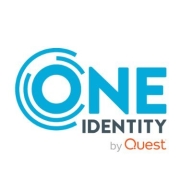

Apica and syslog-ng are competitive solutions in monitoring and logging. Apica has an edge in performance monitoring and user-friendly support, while syslog-ng is favored for its comprehensive log management capabilities.
Features: Apica offers real-time performance monitoring, end-user experience tracking, and an efficient alerting system. Syslog-ng provides detailed log collection, parsing abilities, and supports scalability with various log formats.
Room for Improvement: Apica can enhance integration capabilities, provide customization options, and offer more flexible deployments. Syslog-ng users highlight the need for better documentation, a more intuitive setup process, and addressing usability challenges.
Ease of Deployment and Customer Service: Apica is noted for its straightforward deployment and responsive customer service. Syslog-ng's deployment requires expertise in configuration, yet its customer service is recognized for technical proficiency.
Pricing and ROI: Apica's cost-effective model offers a strong return on investment through performance insights. Syslog-ng, although more expensive, justifies its price with extensive logging capabilities for advanced security and compliance needs.


Apica leads in observability cost optimization, empowering IT teams to manage telemetry data economics efficiently. It supports various data types, reducing costs by 40% with flexible deployment options and eliminating tool sprawl through modular solutions.
Apica Ascent optimizes observability costs across metrics, logs, traces, and events and provides adaptability beyond proprietary formats. Its patented InstaStore™ technology ensures maximum storage efficiency and advanced root cause analysis. Organizations leverage Apica for comprehensive control over observability investments, reducing runaway costs. With solutions for mitigating high-cardinality data challenges, Apica supports any data lake preference and offers cloud or on-premises deployments. Its modular solutions eliminate unnecessary tool redundancies, enhancing economic efficiency in telemetry data management.
What features define Apica's capabilities?Apica addresses industry needs in monitoring and testing applications, enhancing user experience across sectors. It is instrumental in synthetic checks, load testing, API monitoring, and validating functionalities for stability in gaming, finance, eCommerce, and banking platforms. Apica's versatility supports both on-premises and cloud environments, ensuring accurate insights into service availability and network performance.
Optimizing SIEM
syslog-ng is the log management solution that improves the performance of your SIEM solution by reducing the amount and improving the quality of data feeding your SIEM.
Rapid search and troubleshooting
With syslog-ng Store Box, you can find the answer. Search billions of logs in seconds using full text queries with Boolean operators to pinpoint critical logs.
Meeting compliance requirements
syslog-ng Store Box provides secure, tamper-proof storage and custom reporting to demonstrate compliance.
Big data ingestion
syslog-ng can deliver data from a wide variety of sources to Hadoop, Elasticsearch, MongoDB, and Kafka as well as many others.
Universal log collection and routing
syslog-ng flexibly routes log data from X sources to Y destinations. Instead of deploying multiple agents on hosts, organizations can unify their log data collection and management.
Secure data archive
syslog-ng Store Box provides automated archiving, tamper-proof encrypted storage, granular access controls to protect log data. The largest appliance can store up to 10TB of raw logs.
We monitor all Log Management reviews to prevent fraudulent reviews and keep review quality high. We do not post reviews by company employees or direct competitors. We validate each review for authenticity via cross-reference with LinkedIn, and personal follow-up with the reviewer when necessary.